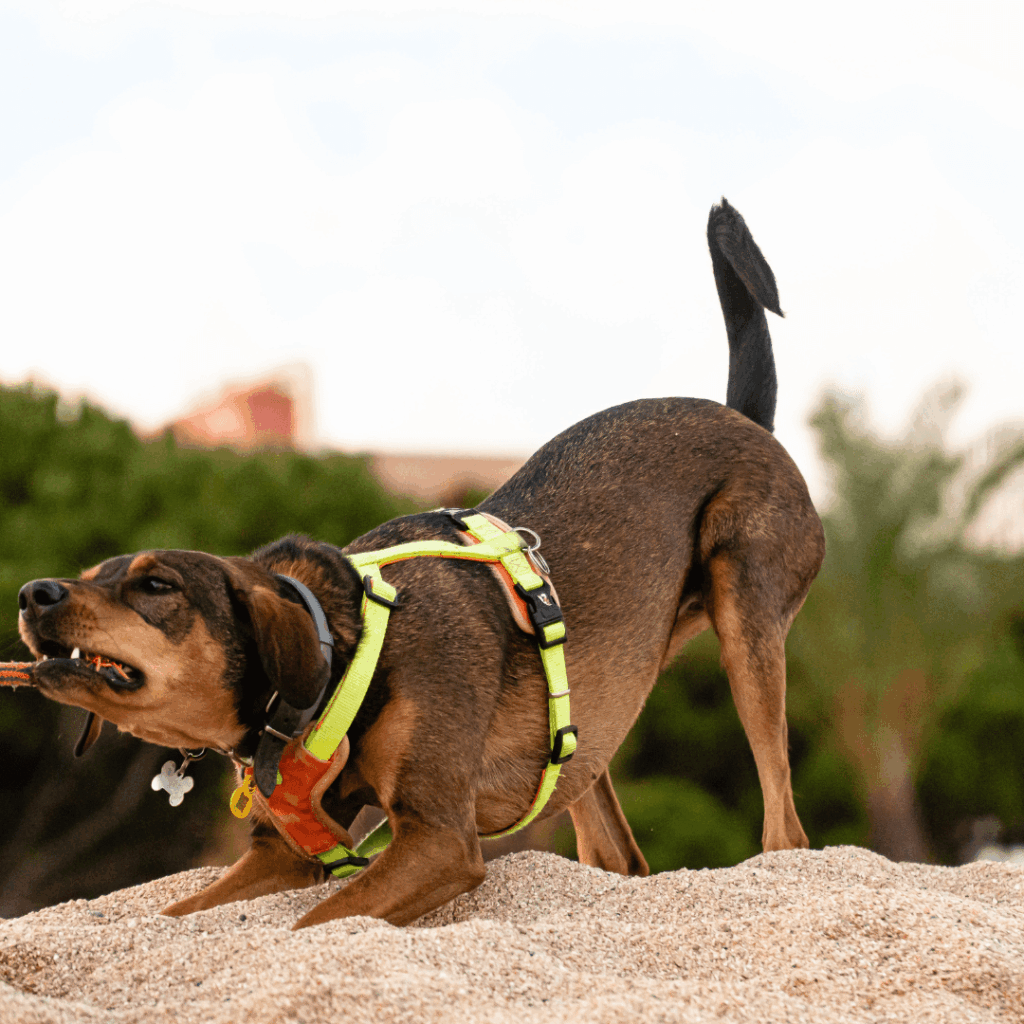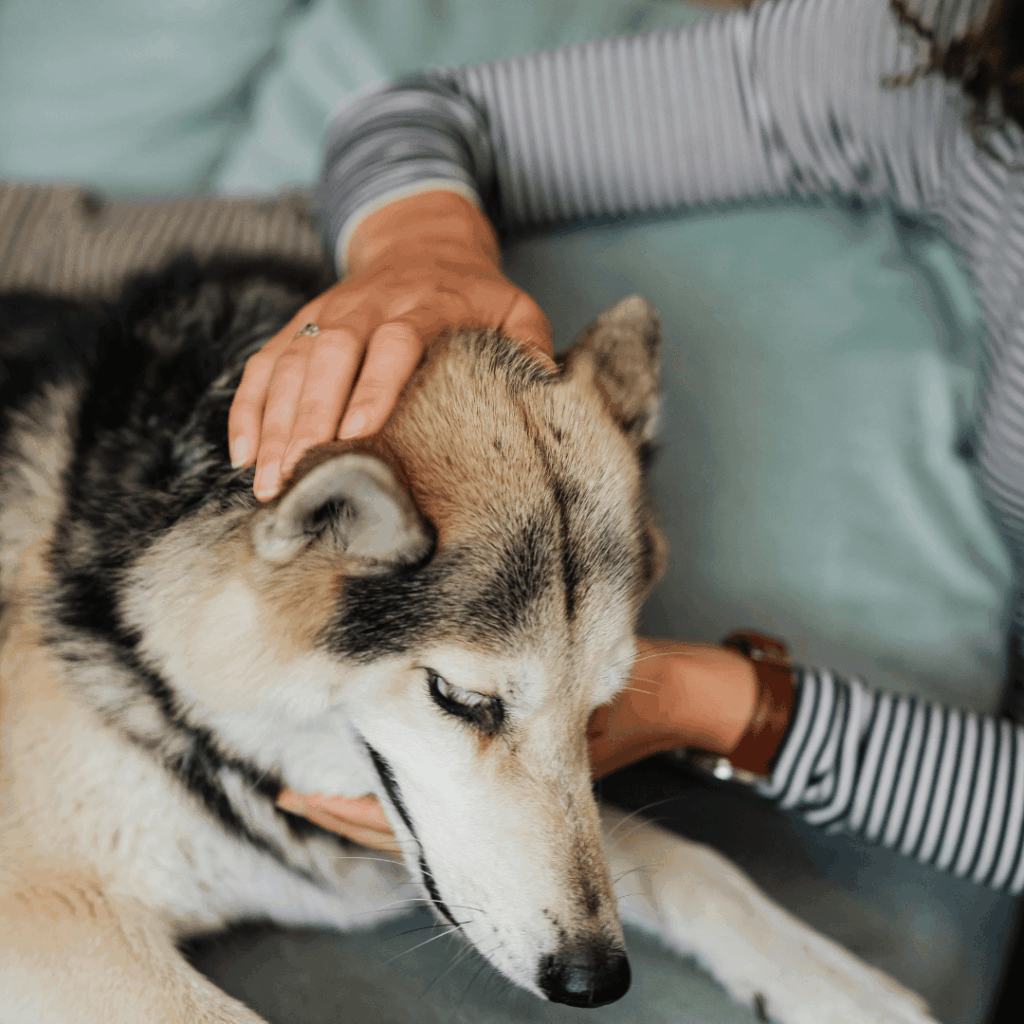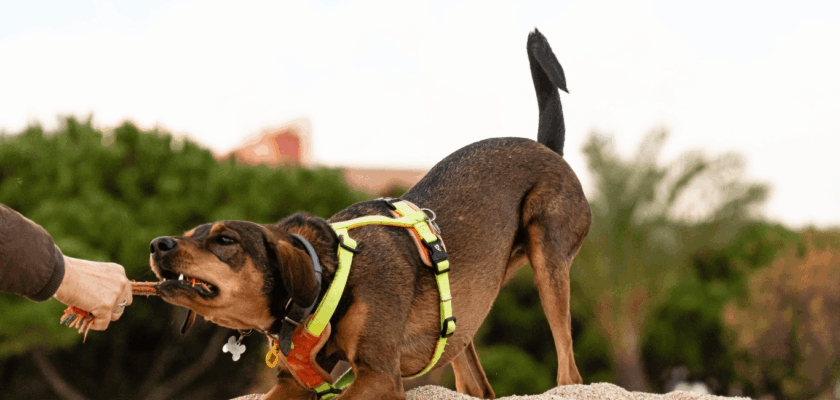Just like humans, dogs experience fear, anxiety, and stress in certain situations. Thunderstorms, fireworks, visits to the vet, loud noises, strangers, or the presence of other animals can easily make your dog nervous or frightened. While your first instinct might be to comfort your furry friend by holding or hugging them, there are actually more effective ways to help your dog remain calm and confident.
Understanding your dog’s body language, identifying the root cause of anxiety, and applying the right calming techniques are key to building emotional stability and trust. This guide explores both immediate calming strategies and long-term prevention methods to help your dog overcome fear and anxiety naturally.
1. Recognize the Signs of Anxiety in Dogs

Every dog expresses stress differently, and understanding their unique body language is essential. There is no single sign that defines fear or anxiety — one dog may hide or tremble, while another may bark, growl, or become aggressive. Both are simply ways of saying, “I’m scared” or “I don’t feel safe.”
Common Signs of Anxiety Include:
- Crouching or tucking the body close to the ground
- Avoiding eye contact or dilated pupils
- Flattened or pulled-back ears
- Wrinkled forehead or tense facial expression
- Whining, whimpering, or growling
- Shaking or trembling
- Sweaty paw pads
- Loss of bladder or bowel control
When you notice these signals, it’s important to remain calm and observe what’s triggering the reaction.
2. Identify the Root Cause of Your Dog’s Fear
Dogs often become anxious because of specific triggers. Some fear loud sounds like fireworks or thunderstorms, while others react to strangers, new environments, or certain animals.
Try putting yourself in your pet’s position. Imagine rarely leaving home and suddenly being exposed to loud noises, unfamiliar faces, or bright flashes of light — it’s no surprise that dogs can find these experiences terrifying. Empathy is key. The more you understand what your dog is going through, the better you can help them feel safe.
3. Minimize the Triggers
Once you know what causes your dog’s anxiety, the next step is to reduce their exposure to those stressors.
- If strangers make your dog nervous, move them to a quiet room when guests arrive.
- During thunderstorms or fireworks, close the curtains, dim the lights, and play soft music to mask loud sounds.
- Provide a safe hiding spot such as a crate or a cozy corner covered with a blanket to help block out noise.
You can also train your dog to use their crate as a “safe zone.” Over time, they’ll associate it with comfort and security rather than confinement. When they feel anxious, they’ll voluntarily go there to calm themselves.
4. Redirect Your Dog’s Attention
Redirection is one of the most effective methods for reducing stress. When your dog starts to show signs of fear, shift their focus to something positive.
Give them their favorite chew toy, play a short game, or offer a treat to distract them from the source of anxiety. By doing this, your dog begins to associate previously scary situations with fun or rewards.
For instance, if fireworks used to make your dog panic, but you consistently offer playtime or treats during fireworks, they may start to view the experience less fearfully over time.
5. Comfort Your Dog the Right Way
Dogs, like people, have individual preferences when it comes to affection. Some enjoy gentle petting, while others prefer firm pats or even hugs.
A calming way to reassure your dog is to stroke gently from the top of their head down to their back and hips. Repeat slowly to help release tension.
However, be cautious — excessive comforting might unintentionally reinforce the fear. When you pet your dog every time they act scared, they may interpret it as approval for their anxious behavior.
Instead, maintain a calm demeanor. Sometimes, ignoring fearful behavior and continuing as if everything is normal helps the dog realize there’s nothing to worry about.
6. Try a Thundershirt or Calming Vest
A popular and scientifically supported solution for canine anxiety is the Thundershirt. This snug-fitting garment applies gentle, constant pressure around the dog’s body, similar to the soothing effect of swaddling a baby.
Many dogs feel comforted by this sensation and become noticeably calmer during storms, fireworks, or travel. While it may not work for every dog, it’s an affordable and non-invasive option worth trying.
7. Play Classical Music or Calming Sounds
Studies have shown that classical music has a soothing effect on dogs. Many shelters and kennels use soft instrumental music to help calm nervous animals.
Create a peaceful environment at home by playing slow, melodic tunes during stressful events like thunderstorms or while you’re away. White noise machines or nature sounds can also mask loud noises that trigger anxiety.
Part 2: Preventing Anxiety in Dogs

While managing fear is important, preventing it in the first place is even better. Anxiety in dogs often stems from a lack of proper training, socialization, or consistent routines.
1. Train Your Dog to Stay Calm
Professional trainers agree that most severe anxiety or reactive behaviors result from insufficient training. Positive reinforcement and structured lessons can help your dog build confidence and resilience.
Example:
If your dog gets anxious in the vet’s waiting room, use simple commands like “sit” or “lie down.” Once they obey, give them a treat. Over time, they’ll associate the clinic with positive experiences instead of fear.
This method redirects their focus away from the stressful environment and helps create new, positive associations.
2. Control Your Own Emotions
Dogs are incredibly sensitive to human emotions. They often look to their owners for cues on how to react.
If you appear nervous, they’ll assume something is wrong. When faced with stressful situations, take a deep breath, relax your body, and project calm energy.
For example, if you’re anxious while your dog undergoes surgery, your pet may pick up on your tension and become frightened. Instead, maintain a positive, reassuring tone. Similarly, avoid screaming or reacting dramatically during thunderstorms — your dog may think danger is imminent.
3. Use Pheromone Diffusers
Dogs communicate through pheromones — chemical signals that convey emotional states. Mother dogs naturally release calming pheromones to comfort their puppies.
Synthetic versions of these pheromones, known as DAP (Dog Appeasing Pheromone), are available in diffusers, sprays, or collars. Plug a diffuser into a wall outlet or attach a pheromone collar to your dog to help them relax naturally.
These products are particularly effective for separation anxiety, travel stress, or fear of loud noises.
4. Try Natural Calming Supplements
Some dogs benefit from natural calming aids such as Zylkene, a supplement derived from milk proteins. It works similarly to mild anti-anxiety medications but without sedation.
Zylkene can be given twice daily and has been shown to help dogs remain calm during thunderstorms, vet visits, or kennel stays. Always consult your veterinarian before introducing new supplements or medications.
5. Consult Your Veterinarian for Severe Anxiety
If your dog’s anxiety is intense or persistent, professional help is necessary. A veterinarian can assess the situation and recommend behavioral therapy or prescription medication.
Common medications for managing severe anxiety in dogs include:
- Benzodiazepines (BZs) – for short-term panic or phobia episodes
- Monoamine Oxidase Inhibitors (MAOIs) – for specific behavioral disorders
- Tricyclic Antidepressants (TCAs) – for generalized anxiety
- Selective Serotonin Reuptake Inhibitors (SSRIs) – for long-term anxiety management
Only administer these medications under veterinary supervision. The goal is to combine them with behavior modification rather than rely on drugs alone.
Helping your dog overcome anxiety requires patience, empathy, and consistency. Whether it’s through positive training, calm energy, or supportive tools like pheromone diffusers and Thundershirts, your actions play a crucial role in shaping how your dog perceives the world.
Remember, a calm owner creates a calm dog. By identifying triggers, creating a safe environment, and reinforcing confidence through training, you can help your furry friend lead a happier, more peaceful life — no matter what noises or challenges the world throws their way.
